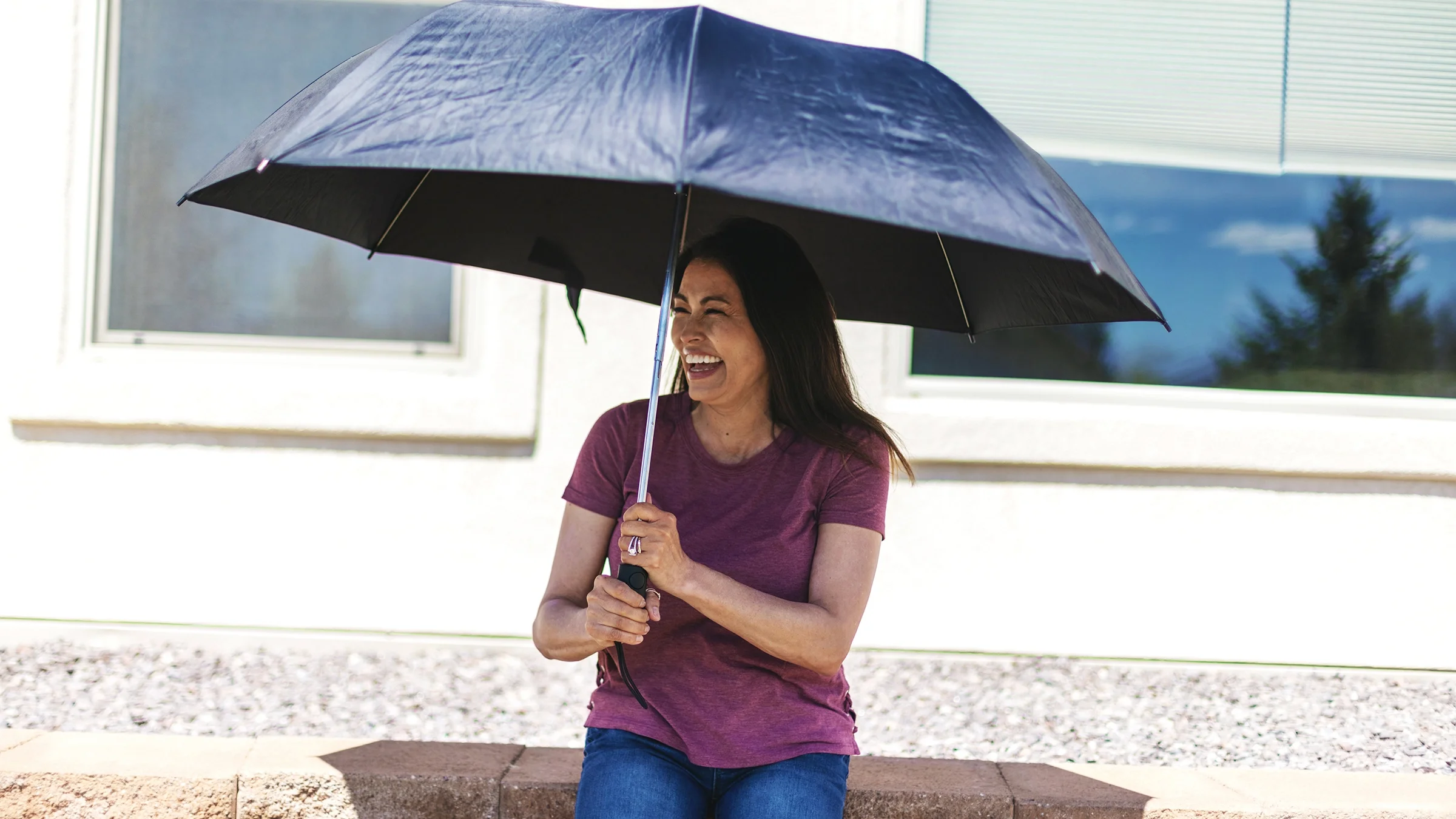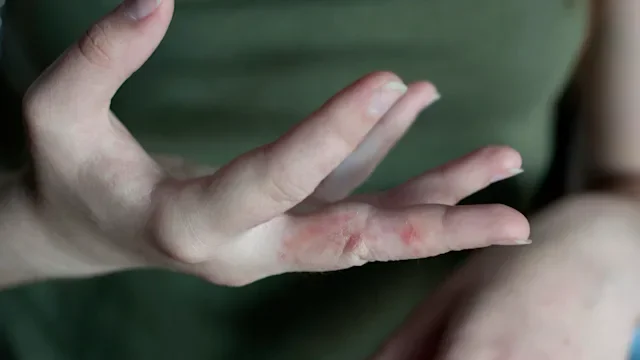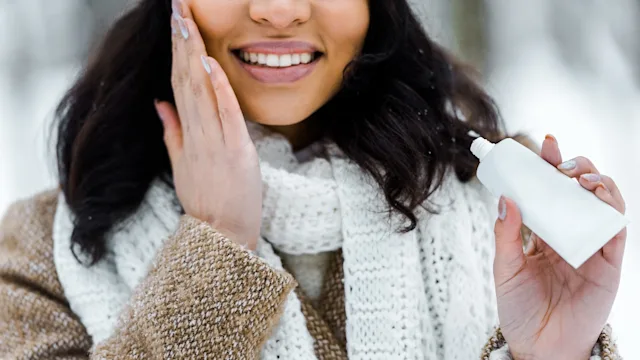Key takeaways:
Ultraviolet (UV) light from the sun and other sources leads to an increased risk of skin cancer and premature skin aging.
Sunscreen is an important way to protect your skin, but there are other ways to protect yourself.
Wearing clothing and a hat, using an umbrella, and avoiding UV lights can protect your skin from sun damage. Eating foods high in antioxidants and omega-3 fats may also help.
Sunlight can improve your health in many ways. It can increase your vitamin D levels and boost your mood, among other things. But unprotected exposure to the sun can be unhealthy. The sun produces harmful ultraviolet (UV) radiation that can burn your skin and lead to premature skin aging, skin cancer, and eye damage.
Daily sunscreen use goes a long way toward shielding you from UV rays. But there are several other ways you can protect yourself.
1. Cover up using clothing and hats
Covering your skin can help safeguard you from UVA and UVB rays. But some clothes offer better protection than others. You can look for clothing labeled with an ultraviolet protection factor (UPF). This measures how well the fabric can protect your skin from UV rays. For example, a shirt with a UPF 50 rating blocks roughly 98% of the sun's UV rays. The Skin Cancer Foundation (SCF) requires a UPF of 50 or higher to grant its seal of recommendation.
Search and compare options
But clothing doesn't have to have an SCF recommendation to offer sun protection. Many factors determine how protective clothing is, including:
Color: Research suggests that darker colors are better at blocking the sun than lighter colors. That's because they absorb more UV rays.
Material: Clothing made of tightly woven fabrics block more UV light than clothing made with loose-weave fabrics. So, rayon, polyester, and denim block the sun better than unbleached cotton or mesh. You can test your clothes by holding them up to the light. If you can see through the fabric, it’s not protective enough.
Fit: Looser-fitting clothes can reduce your exposure to the sun's rays. That's because tight clothes might stretch or tear, allowing more UV rays to reach your skin. And wet clothing is less protective than dry clothing. So, if you're planning to hit the pool or ocean, remember to change your clothes when you get out of the water.
Style: It helps to cover your skin as much as you can. So consider long-sleeved shirts, wide-brimmed hats, and long pants or skirts.
2. Wear sunglasses
UV radiation can damage your eyes, eyelids, and the sensitive skin around your eyes. Luckily, wearing sunglasses can shield these areas and reduce the risk of cataracts and other eye conditions caused by sun damage. In general, goggles and large sunglasses are better at protecting your eyes from UV rays than smaller sunglasses.
But not all eyewear works the same at blocking sunlight. One way to check the effectiveness of your sunglasses is to see if they have an eye-sun protection factor (E-SPF). The E-SPF measures how well lenses block the transmission of light and UV reflection. The American Academy of Ophthalmology (AAO) recommends wearing sunglasses that block 99% to 100% of UV light.
3. Use an umbrella
Umbrellas aren’t just for rainy days. Using an umbrella in the sun can stop direct UV rays from hitting your skin. But research shows that umbrellas are less effective at blocking scattered or diffused UV rays. This type of light is common at the beach. So umbrellas are most effective when you use them in combination with other sun-protection strategies.
4. Avoid UV lights
The sun isn't the only source of damaging UV light. Some artificial sources of UV light include:
Tanning beds: Like the sun, tanning beds emit dangerous UV rays that increase your risk of skin cancer and premature skin aging. Tanning beds can also cause eye damage.
Mercury vapor lighting: Mercury vapor lamps provide long-lasting light to large areas. These often include streets, stores, and sports arenas. The bulbs have an outer layer to protect people from UV light exposure. But if the outer bulb breaks, unfiltered UV light can pass through and cause skin burns, headaches, and blurred vision.
Halogen, incandescent, and fluorescent light bulbs: All three of these bulb types can expose you to UV radiation. In some cases, the level of harmful light may be comparable to that from the sun.So, make sure light bulbs have protective coverings to shield against UV radiation. This is especially important for people who have health conditions that are triggered by sunlight, such as lupus.
Should you wear sunscreen every day? Wearing sunscreen every day lowers your risks of skin cancer, premature skin aging, and hyperpigmentation caused by the sun’s ultraviolet (UV) ways.
Signs of skin cancer: Getting sunburns increases your risk of skin cancer. See pictures of what skin cancer looks like.
Dealing with sunburn pain? From cool baths to vinegar compresses, read how these three people relieved their sunburn discomfort.
Do sunscreen pills work? Maybe someday in the future they will. But so far, taking a sunscreen pill alone hasn’t been proven to be safe and effective for sun protection.
5. Limit your time in direct sunlight
It's best to limit your time outdoors when the sun’s rays are most powerful. This is between the hours of 10 AM and 4 PM in summer. If you’re outside during this time, be sure to protect your skin and scalp. And take plenty of breaks in the shade (and indoors, if possible).
Frequently asked questions
The FDA regulates sunscreens, so all sunscreen has to meet the same standards for safety and effectiveness. So an expensive sunscreen and a low-cost sunscreen should provide the same amount of sun protection. But cheap sunscreens and more expensive ones may contain different inactive ingredients. For example, some sunscreens add nutrients — such as moisturizers or antioxidants — to provide skin health benefits.
The American Academy of Dermatology (AAD) recommends choosing a sunscreen that:
Provides a protection level of SPF 30 or higher
Contains broad-spectrum coverage (protects against both UVA and UVB rays)
Is water-resistant
Regular lotions can’t protect you from UV rays. That’s because they don’t contain a sun protection factor (SPF). Skin oils — such as coconut oil, carrot seed oil, and wheat germ oil — don’t provide sun protection either. Your best bet is to choose a mineral or chemical sunscreen that you like enough to incorporate into your daily routine.
To be clear, food can’t protect your skin from UV rays. Foods aren’t a substitute for sunscreen and other forms of sun protection. But some nutrients in food may add to your skin’s ability to protect itself. For example, a diet rich in antioxidants may support skin health. Foods rich in antioxidants include berries, nuts, and sweet potatoes. Omega-3 fatty acids can also help keep your skin healthy. Foods with omega-3s include oily fish (such as salmon and sardines), flaxseed and flaxseed oil, and avocado.
The FDA regulates sunscreens, so all sunscreen has to meet the same standards for safety and effectiveness. So an expensive sunscreen and a low-cost sunscreen should provide the same amount of sun protection. But cheap sunscreens and more expensive ones may contain different inactive ingredients. For example, some sunscreens add nutrients — such as moisturizers or antioxidants — to provide skin health benefits.
The American Academy of Dermatology (AAD) recommends choosing a sunscreen that:
Provides a protection level of SPF 30 or higher
Contains broad-spectrum coverage (protects against both UVA and UVB rays)
Is water-resistant
Regular lotions can’t protect you from UV rays. That’s because they don’t contain a sun protection factor (SPF). Skin oils — such as coconut oil, carrot seed oil, and wheat germ oil — don’t provide sun protection either. Your best bet is to choose a mineral or chemical sunscreen that you like enough to incorporate into your daily routine.
To be clear, food can’t protect your skin from UV rays. Foods aren’t a substitute for sunscreen and other forms of sun protection. But some nutrients in food may add to your skin’s ability to protect itself. For example, a diet rich in antioxidants may support skin health. Foods rich in antioxidants include berries, nuts, and sweet potatoes. Omega-3 fatty acids can also help keep your skin healthy. Foods with omega-3s include oily fish (such as salmon and sardines), flaxseed and flaxseed oil, and avocado.
The bottom line
Sunscreen is an important tool to help protect your skin from the sun. But it's not the only way to shield your skin from the sun's harmful UV rays. Wearing protective clothing, using an umbrella, and eating foods that contain skin-protecting nutrients are a few other ways to stay safe. But sunscreen is still an important part of sun protection. So it's best to combine regular sunscreen use with these other methods.

Why trust our experts?



References
American Academy of Dermatology Association. (2023). 10 surprising facts about indoor tanning.
American Academy of Dermatology Association. (2025). Sunscreen FAQs.
American Academy of Ophthalmology. (2015). Recommended types of sunglasses.
American Cancer Society. (2024). UV (ultraviolet) radiation and cancer risk.
Backes, C., et al. (2018). Sun exposure to the eyes: Predicted UV protection effectiveness of various sunglasses. Journal of Exposure Science & Environmental Epidemiology.
Behar-Cohen, F., et al. (2013). Ultraviolet damage to the eye revisited: Eye-sun protection factor (E-SPF®), a new ultraviolet protection label for eyewear. Clinical Ophthalmology.
Duarte, I. A. G., et al. (2015). Ultraviolet radiation emitted by lamps, TVs, tablets and computers: are there risks for the population? Anais Brasileiros de Dermatologia.
Dubrovski, P. D., et al. (2009). Effects of woven fabric construction and color on ultraviolet protection. Textile Research Journal.
Gambichler, T., et al. (2002). Influence of wetness on the ultraviolet protection factor (UPF) of textiles: In vitro and in vivo measurements. Photodermatology, Photoimmunology and Photomedicine.
Latreille, J., et al. (2013). Association between dietary intake of n-3 polyunsaturated fatty acids and severity of skin photoaging in a middle-aged Caucasian population. Dermatological Science.
Ou-Yang, H., et al. (2017). Sun protection by beach umbrella vs sunscreen with a high sun protection factor: A randomized clinical trial. JAMA Dermatology.
Riva, A., et al. (2009). Modeling the effects of color on the UV protection provided by cotton woven fabrics dyed with azo dyestuffs. Industrial & Engineering Chemistry Research.
Sayre, R. M., et al. (2004). Dermatological risk of indoor ultraviolet exposure from contemporary lighting sources. Photochemistry and Photobiology.
Skin Cancer Foundation. (2024). Seal of recommendation: Safe and effective sun protection.
U.S. Food and Drug Administration. (2023). Mercury vapor lamps (mercury vapor light bulbs).
U.S. Food and Drug Administration. (2024). Sunscreen: How to help protect your skin from the sun.
Venosa, A. (2023). Dress to protect: 5 things that affect how well your clothes block UV rays. Skin Cancer Foundation.














